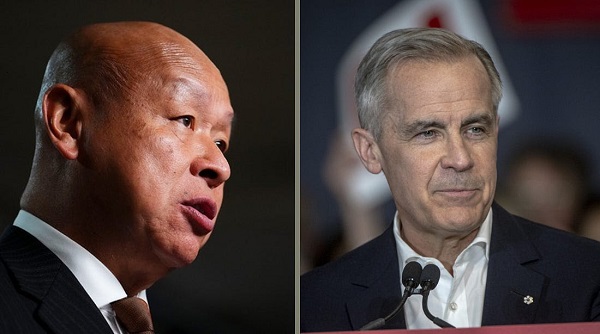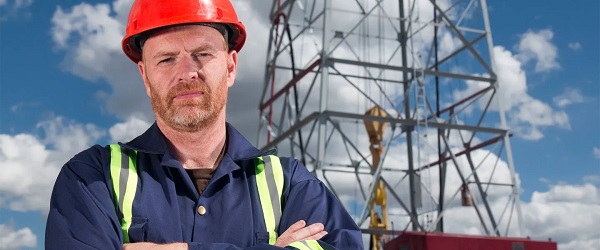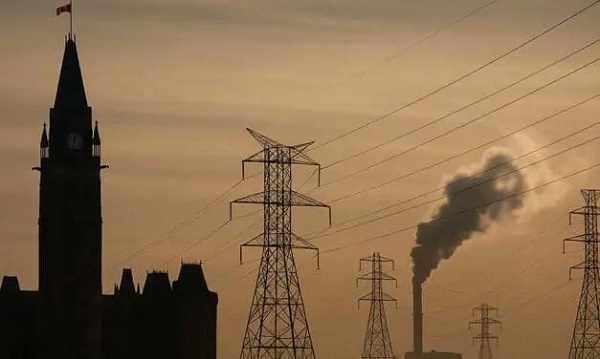Uncategorized
Tsunami set off by volcano sweeps Indonesia coast; 168 dead

JAKARTA, Indonesia — During a busy holiday weekend, a tsunami apparently caused by the eruption of an island volcano killed more than 160 people around Indonesia’s Sunda Strait, sending a wall of water crashing ashore and sweeping away people attending a beach concert along with hundreds of houses including hotels, the government and witnesses said.
More than 700 people have been reported injured since the tsunami hit at 9:27 p.m. Saturday, the Disaster Management Agency said. At least 30 others are unaccounted for.
The disaster could have been caused by undersea landslides from the eruption of Anak Krakatau, a volcanic island formed over years from the nearby Krakatau volcano, scientists from Indonesia’s Meteorology and Geophysics Agency said. They also cited tidal waves caused by the full moon.
Footage posted on social media showed a pop band named “Seventeen” performing for employees from a local electric company under a tent on a beach as dozens of people sat listening at tables covered in white cloths. As bright strobe lights flashed on stage, a child could be seen wandering through the crowd. Then, as the second song was about to begin with the drummer pounding, the stage suddenly heaved forward, throwing the band and all their equipment into the audience.
The band released a statement saying their bass player and road manager were found dead, while three other band members and the wife of one of the performers remained missing.
“The tide rose to the surface and dragged all the people on site,” it said. “Unfortunately, when the current receded our members are unable to save themselves while some did not find a place to hold on.”
Tourists were also affected during the long holiday weekend ahead of Christmas. Australia and New Zealand said they have no information their citizens were among the victims but were continuing to check.
“I had to run, as the wave passed the beach and landed 15-20m (meters) inland,” Norwegian Øystein Lund Andersen wrote on Facebook. The self-described photographer and volcano-enthusiast said he was taking pictures of the volcano when he suddenly saw a big wave come toward him.
“Next wave entered the hotel area where I was staying and downed cars on the road behind it. Managed to evacuate with my family to higher ground trough forest paths and villages, where we are taken care of (by) the locals. Were unharmed, thankfully.”
The worst affected area was the Pandeglang region of Banten province in Java, which encompasses the Ujung Kulon National Park and popular beaches, the disaster agency said. Disaster agency spokesman Sutopo Purwo Nugroho said 168 deaths have been confirmed so far and another 30 people are missing. Also, 745 were injured. He said those numbers may still rise since not all affected areas have been reached.
In the city of Bandar Lampung on southern Sumatra, hundreds of residents took refuge at the governor’s office.
Alif, a resident in Pandeglang district who goes by one name, said told MetroTV station that many people were still searching for missing relatives.
Indonesian President Joko “Jokowi” Widodo expressed his sympathy and ordered government agencies to respond quickly to the disaster.
“My deep condolences to the victims in Banten and Lumpung provinces,” he said. “Hopefully, those who are left have patience.”
The Anak Krakatau volcano in the Sunda Strait that links the Indian Ocean and Java Sea erupted about 24 minutes before the tsunami, the geophysics agency said.
The 305-meter (1,000-foot) -high volcano, about 200
Gegar Prasetya, co-founder of the Tsunami Research Center Indonesia, said the waves were likely caused by a flank collapse — when a big section of a volcano’s slope gives way. He said it’s possible for an eruption to trigger a landslide above ground or beneath the ocean, both capable of producing a tsunami.
“Actually, the tsunami was not really big, only one meter,” said Prasetya, who has closely studied Krakatau. “The problem is people always tend to build everything close to the shoreline.”
Physical losses included 430 heavily damaged homes, nine heavily damaged hotels and 10 heavily damaged vessels. Footage posted by the head of the disaster agency showed the aftermath of flooded streets and an overturned car.
In September, more than 2,500 people were killed by a quake and tsunami that hit the city of Palu on the island of Sulawesi, which is just east of Borneo.
Saturday’s tsunami triggered memories for some of the massive 9.1-magnitude earthquake that hit on Dec. 26, 2004. It spawned a giant tsunami off Sumatra island in western Indonesia, killing more than 230,000 people in a dozen countries — the majority in Indonesia. The vast archipelago of more than 17,000 islands home to 260 million people. Roads and infrastructure are poor in many areas, making access difficult in the best of conditions.
____
Associated Press writer Niniek Karmini contributed to this report.
Ali Kotarumalos And Margie Mason, The Associated Press
Uncategorized
Kananaskis G7 meeting the right setting for U.S. and Canada to reassert energy ties


Energy security, resilience and affordability have long been protected by a continentally integrated energy sector.
The G7 summit in Kananaskis, Alberta, offers a key platform to reassert how North American energy cooperation has made the U.S. and Canada stronger, according to a joint statement from The Heritage Foundation, the foremost American conservative think tank, and MEI, a pan-Canadian research and educational policy organization.
“Energy cooperation between Canada, Mexico and the United States is vital for the Western World’s energy security,” says Diana Furchtgott-Roth, director of the Center for Energy, Climate and Environment and the Herbert and Joyce Morgan Fellow at the Heritage Foundation, and one of America’s most prominent energy experts. “Both President Trump and Prime Minister Carney share energy as a key priority for their respective administrations.
She added, “The G7 should embrace energy abundance by cooperating and committing to a rapid expansion of energy infrastructure. Members should commit to streamlined permitting, including a one-stop shop permitting and environmental review process, to unleash the capital investment necessary to make energy abundance a reality.”
North America’s energy industry is continentally integrated, benefitting from a blend of U.S. light crude oil and Mexican and Canadian heavy crude oil that keeps the continent’s refineries running smoothly.
Each day, Canada exports 2.8 million barrels of oil to the United States.
These get refined into gasoline, diesel and other higher value-added products that furnish the U.S. market with reliable and affordable energy, as well as exported to other countries, including some 780,000 barrels per day of finished products that get exported to Canada and 1.08 million barrels per day to Mexico.
A similar situation occurs with natural gas, where Canada ships 8.7 billion cubic feet of natural gas per day to the United States through a continental network of pipelines.
This gets consumed by U.S. households, as well as transformed into liquefied natural gas products, of which the United States exports 11.5 billion cubic feet per day, mostly from ports in Louisiana, Texas and Maryland.
“The abundance and complementarity of Canada and the United States’ energy resources have made both nations more prosperous and more secure in their supply,” says Daniel Dufort, president and CEO of the MEI. “Both countries stand to reduce dependence on Chinese and Russian energy by expanding their pipeline networks – the United States to the East and Canada to the West – to supply their European and Asian allies in an increasingly turbulent world.”
Under this scenario, Europe would buy more high-value light oil from the U.S., whose domestic needs would be back-stopped by lower-priced heavy oil imports from Canada, whereas Asia would consume more LNG from Canada, diminishing China and Russia’s economic and strategic leverage over it.
* * *
The MEI is an independent public policy think tank with offices in Montreal, Ottawa, and Calgary. Through its publications, media appearances, and advisory services to policymakers, the MEI stimulates public policy debate and reforms based on sound economics and entrepreneurship.
As the nation’s largest, most broadly supported conservative research and educational institution, The Heritage Foundation has been leading the American conservative movement since our founding in 1973. The Heritage Foundation reaches more than 10 million members, advocates, and concerned Americans every day with information on critical issues facing America.
Uncategorized
Poilievre on 2025 Election Interference – Carney sill hasn’t fired Liberal MP in Chinese election interference scandal

From Conservative Party Communications
“Yes. He must be disqualified. I find it incredible that Mark Carney would allow someone to run for his party that called for a Canadian citizen to be handed over to a foreign government on a bounty, a foreign government that would almost certainly execute that Canadian citizen.
“Think about that for a second. We have a Liberal MP saying that a Canadian citizen should be handed over to a foreign dictatorship to get a bounty so that that citizen could be murdered. And Mark Carney says he should stay on as a candidate. What does that say about whether Mark Carney would protect Canadians?
“Mark Carney is deeply conflicted. Just in November, he went to Beijing and secured a quarter-billion-dollar loan for his company from a state-owned Chinese bank. He’s deeply compromised, and he will never stand up for Canada against any foreign regime. It is another reason why Mr. Carney must show us all his assets, all the money he owes, all the money that his companies owe to foreign hostile regimes. And this story might not be entirely the story of the bounty, and a Liberal MP calling for a Canadian to be handed over for execution to a foreign government might not be something that the everyday Canadian can relate to because it’s so outrageous. But I ask you this, if Mark Carney would allow his Liberal MP to make a comment like this, when would he ever protect Canada or Canadians against foreign hostility?
“He has never put Canada first, and that’s why we cannot have a fourth Liberal term. After the Lost Liberal Decade, our country is a playground for foreign interference. Our economy is weaker than ever before. Our people more divided. We need a change to put Canada first with a new government that will stand up for the security and economy of our citizens and take back control of our destiny. Let’s bring it home.”
-

 Business2 days ago
Business2 days agoCanada’s critical minerals are key to negotiating with Trump
-

 Economy2 days ago
Economy2 days agoOttawa’s muddy energy policy leaves more questions than answers
-

 Business19 hours ago
Business19 hours agoSenator wants to torpedo Canada’s oil and gas industry
-

 Bruce Dowbiggin19 hours ago
Bruce Dowbiggin19 hours agoFUBAR: How Trudeau & Trump Rewrote This Century’s Political Handbook
-

 Business2 days ago
Business2 days agoRFK Jr. planning new restrictions on drug advertising: report
-

 Alberta1 day ago
Alberta1 day agoAlberta’s carbon diet – how to lose megatonnes in just three short decades
-

 espionage1 day ago
espionage1 day agoFrom Sidewinder to P.E.I.: Are Canada’s Political Elites Benefiting from Beijing’s Real Estate Reach?
-

 Energy1 day ago
Energy1 day agoWho put the energy illiterate in charge?






